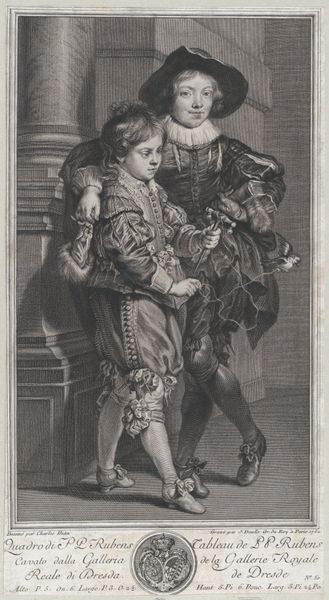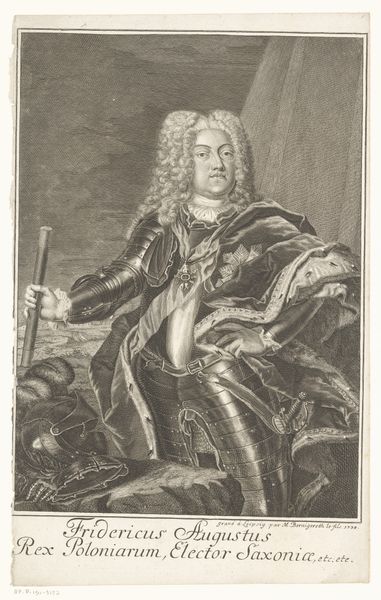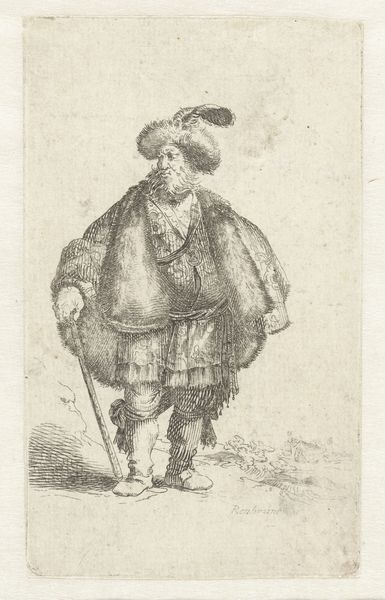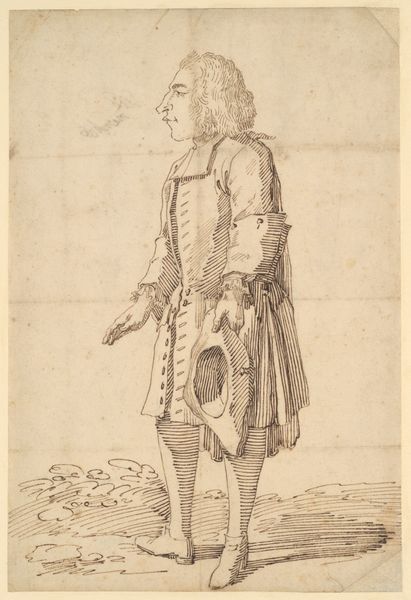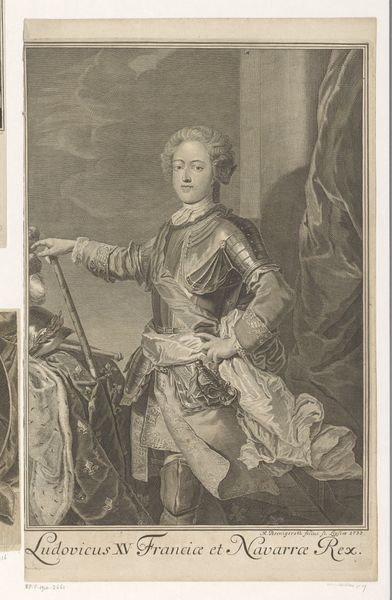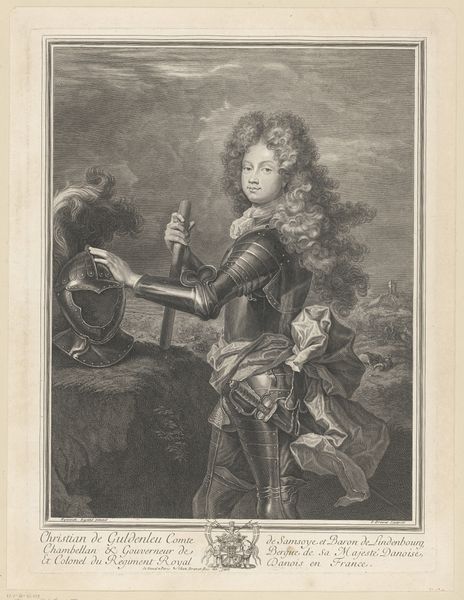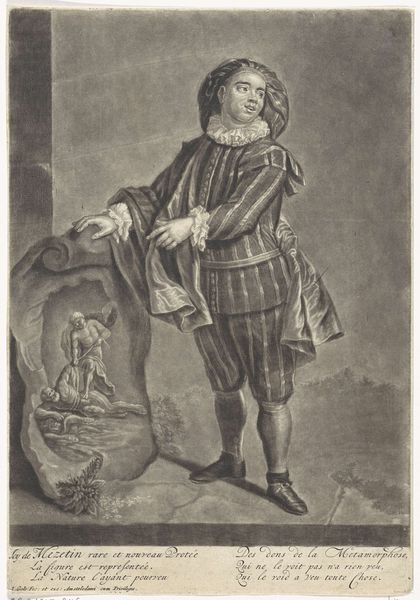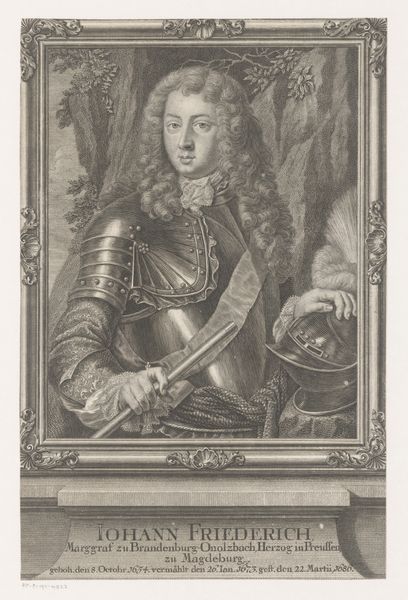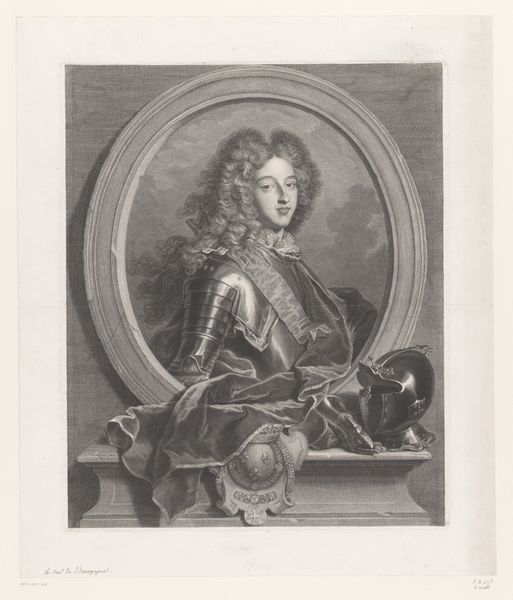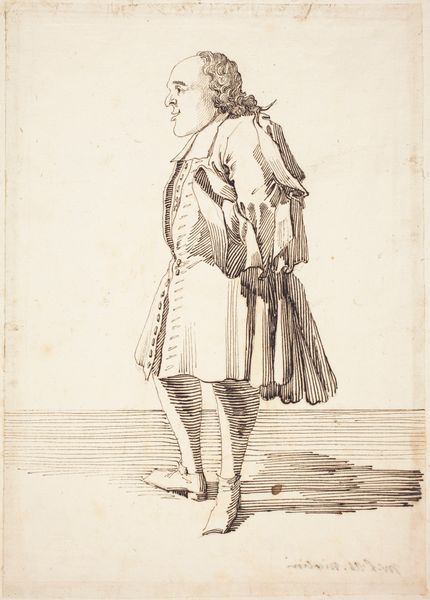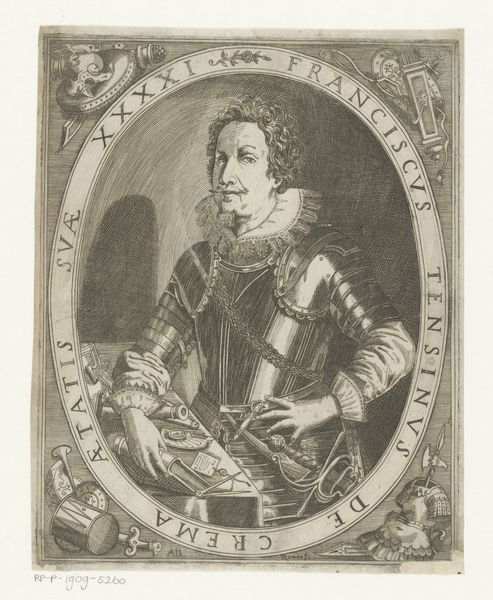
painting, oil-paint
#
portrait
#
baroque
#
dutch-golden-age
#
painting
#
oil-paint
#
genre-painting
#
academic-art
Dimensions: support height 42 cm, support width 32.6 cm, outer size depth 5.5 cm
Copyright: Rijks Museum: Open Domain
Harmen Willems Wieringa painted this portrait of a boy in oil on panel, most likely in the Dutch Republic during the first half of the 17th century. The boy's fashionable, if somewhat severe, black outfit, complete with an elaborate lace collar, suggests that he belongs to a wealthy family, part of the Dutch elite that had prospered during the Golden Age. Notice the books on the table to the left of the boy; these are part of a visual code signifying learning and literacy, qualities cherished by the Dutch Republic's powerful merchant class. In interpreting this portrait, a historian might draw on sources such as period inventories to find out more about the sitter's family, or consult costume books to better understand the social status conveyed by his clothing. These contextual details help us understand the values and aspirations of the society in which this portrait was made. Ultimately, the meaning of this painting is contingent on understanding its original social and institutional context.
Comments
No comments
Be the first to comment and join the conversation on the ultimate creative platform.

